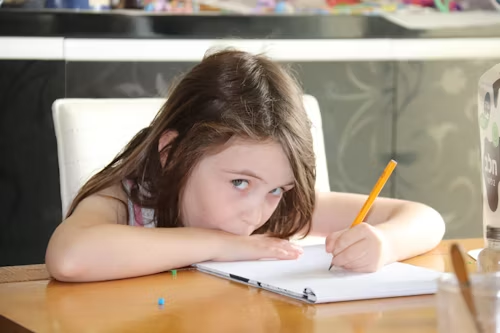Stress management worksheets for Kids?
Stress is a part of life for everyone, including children. Whether it’s due to school pressures, family changes, or personal struggles, kids are not immune to stress, and it’s crucial to equip them with the tools to manage it effectively. One of the most effective ways to help children deal with stress is by using stress management worksheets designed to help them recognize their feelings and stress triggers and learn how to cope with them in healthy ways.
Why Stress Management for Kids is Important
Children, just like adults, experience stress. It can stem from a variety of situations, such as:
School-related pressures: Exams, assignments, or difficult relationships with classmates and teachers.
Family changes: Divorce, moving to a new home, or the arrival of a new sibling.
Social stress: Peer pressure, bullying, or struggling to make friends.
Health issues: Illness or injury affecting themselves or a loved one.
Overloaded schedules: Too many extracurricular activities or commitments.
While a certain level of stress is natural and even necessary for growth and development, chronic or overwhelming stress can harm a child’s emotional, physical, and mental health. Over time, stress can lead to anxiety, depression, difficulty concentrating, sleep problems, and behavioral issues. Teaching kids how to manage stress at an early age can help them build resilience and emotional intelligence, which will serve them well throughout their lives.
The Role of Worksheets in Stress Management for Kids
Worksheets are a practical, engaging, and effective tool for teaching children about stress and how to manage it. They encourage children to reflect on their emotions, identify their stress triggers, and explore different coping strategies. Stress management worksheets for kids typically involve activities that are simple, fun, and interactive, such as:
Drawing or coloring to express emotions.
Mindfulness exercises like breathing or visualizations.
Journaling record feelings and reflect on stressful events.
Problem-solving strategies for handling stress.
Worksheets can be used in the classroom, at home, or in therapy settings, making them a versatile resource for parents, teachers, and mental health professionals.
Types of Stress Management Worksheets for Kids
Worksheets come in various formats and serve different purposes. Below are several types of worksheets that can be useful for kids to learn how to manage stress.
Emotion Recognition Worksheets
help kids identify and label their emotions. Understanding what they’re feeling is the first step in managing stress effectively.
Example Activity:
Feelings Wheel: includes a wheel with different emotions written on it. Kids can color in or point to the emotion they’re feeling at that moment. This helps children recognize and label their emotions, which is essential for managing stress.
Triggers Worksheets
These worksheets help children identify what specifically causes them stress. Understanding the root cause of stress is key to developing effective coping mechanisms.
Example Activity:
Stress Map: Kids fill out a worksheet with different areas of their life (e.g., school, family, friends, activities) and identify what causes them stress in each area. This allows children to visualize their stressors and think about ways to reduce or manage them.
Breathing and Relaxation Worksheets
teach kids how to use breathing exercises and relaxation techniques to calm their minds and bodies. This helps kids manage stress in the moment, especially when they’re feeling overwhelmed.
Activity:
Square Breathing Exercise: A worksheet with instructions for the square breathing technique (inhale for 4 counts, hold for 4 counts, exhale for 4 counts, and hold for 4 counts). Kids can draw pictures of a square and practice breathing in time with each side.
Coping Strategies Worksheets
These worksheets encourage kids to brainstorm and list healthy coping strategies they can use when they’re feeling stressed. This empowers children to feel more in control of their emotions.
Activity:
Coping Strategy List: This helps kids create a list of activities they enjoy that help them feel calm, such as drawing, listening to music, taking a walk, or talking to a parent. The worksheet may prompt them to think about when and how to use these strategies.
Journaling Worksheets
Journaling is a powerful tool for self-expression and reflection. Worksheets for kids can help them process their feelings and reflect on what’s causing them stress.
Stress Journal: This prompts kids to write about their day, focusing on what made them feel stressed and how they dealt with it. It encourages reflection on what worked and what could be improved in the future.
Gratitude Worksheets
is an important part of stress management. Focusing on the positive aspects of life can shift attention away from stress and improve mood.
Gratitude List: This prompts kids to list three things they’re grateful for each day. This helps children develop a positive mindset and reduces stress by focusing on the good things in their lives.
Problem-Solving Worksheets
-Solving worksheets helps kids develop the skills to identify challenges and think through solutions constructively.
Example Activity:
Stress Problem-Solving Chart: A worksheet that helps kids break down a stressful situation into smaller parts and then work through possible solutions step by step. This teaches children to approach problems calmly and logically.
How to Use Stress Management Worksheets Effectively
To get the most out of stress management worksheets, it’s essential to use them in the right context. Here are some tips for using these worksheets effectively:
Create a Calm Environment: Ensure the space where kids complete their worksheets is quiet and free from distractions. This helps them focus on the activity and be more mindful of their emotions.
Use Regularly: Incorporate stress management worksheets into daily or weekly routines. Regular practice helps children become familiar with stress management techniques and improves their ability to cope with stress over time.
Be Supportive: When using worksheets, especially ones that involve emotions and personal reflections, be sure to offer emotional support. Let children know that it’s okay to feel stressed and that you’re there to help them.
Discuss Results Together: After completing the worksheets, take the time to discuss the answers and insights with the child. This provides an opportunity for dialogue, helps reinforce learning, and builds a sense of trust.
Stress Management Activities for Kids

In addition to worksheets, various other activities can help kids manage stress:
Mindfulness Games: Simple games like “Simon Says” or “Freeze Dance” can be adapted to include mindfulness exercises, where kids focus on their breathing or body sensations.
Creative Arts: Drawing, painting, and coloring are great ways for children to express their emotions and reduce stress.
Physical Activity: Exercise is one of the best ways to reduce stress. Encourage kids to engage in physical activities such as running, dancing, or yoga to release pent-up energy and tension.
Relaxation Techniques: Guided imagery, progressive muscle relaxation, or just lying down and listening to calm music can help children relax.
Conclusion
Helping kids manage stress is an essential part of promoting their emotional well-being and overall development. Worksheets are a valuable tool that can help children recognize their stress, understand their emotions, and develop healthy coping strategies. By using these worksheets regularly, children can build resilience and emotional intelligence that will serve them throughout their lives.
Remember, teaching stress management is not just about giving children the tools to cope with stress but also about creating a supportive environment where they feel safe to express themselves and develop the confidence to handle challenges. With consistent practice and support, kids can learn to manage stress in healthy ways that will benefit them for years to come.
Frequently Asked Questions (FAQs)
Q1: At what age should I start teaching kids stress management?
It’s never too early to teach children about stress management. Even toddlers can benefit from basic relaxation techniques like deep breathing. As kids grow older, you can introduce more complex stress management strategies like mindfulness and problem-solving.
Q2: How can I tell if my child is stressed?
Signs of stress in children can vary but may include irritability, difficulty sleeping, changes in appetite, complaints about physical symptoms (like headaches or stomachaches), withdrawal from social activities, or changes in school performance.
Q3: Can stress management worksheets be used for children with anxiety or other mental health issues?
Yes, stress management worksheets can be helpful for children with anxiety or other mental health issues, as they provide structured ways to explore and understand their feelings. However, it’s important to work with a healthcare professional for children with more severe or chronic conditions.
Q4: Can I support my child in using stress management worksheets?
To support your child, take an active interest in their progress with the worksheets. Be patient, listen to their feelings, and offer encouragement. Some children may find it helpful to do the activities together, making it a bonding experience.
Q5: Can stress management worksheets replace professional therapy?
While stress management worksheets can be an excellent tool for managing everyday stress, they should not replace professional therapy if a child is dealing with severe stress or mental health issues. It’s important to consult with a therapist if stress is significantly affecting your child’s well-being.
Q6: How can I make stress management fun for kids?
Make the process engaging by incorporating games, creative arts, and interactive activities. Using colorful worksheets, storytelling, or role-playing exercises can make learning stress management feel more like fun and less like a chore.
